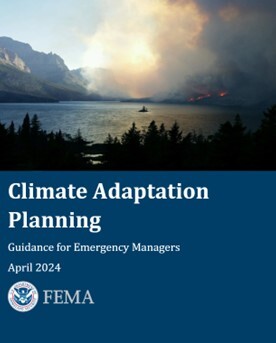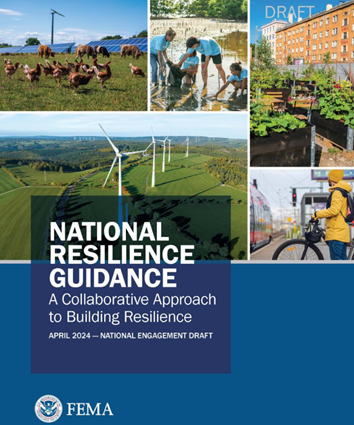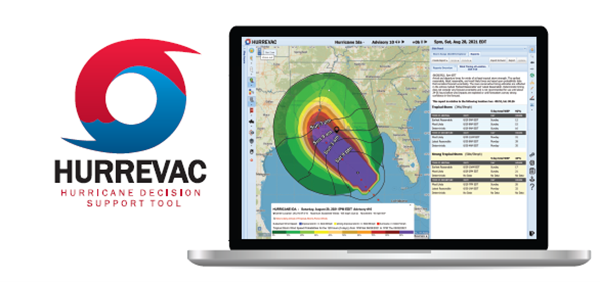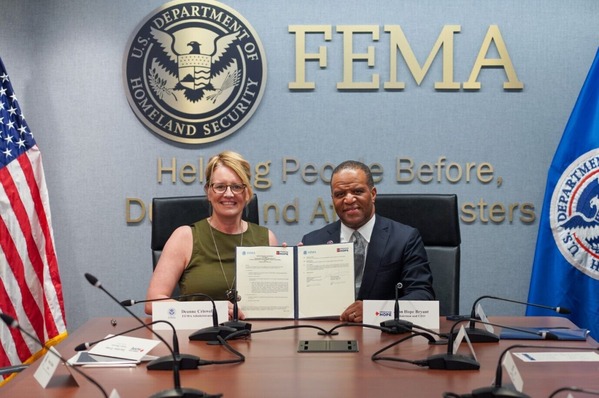|
FEMA has announced it will commit $26.3 million in funding to enhance dam safety efforts across the nation to ensure that communities have the critical infrastructure needed to protect against future disasters like extreme drought and flooding. The grant awards may be viewed on FEMA.gov.
This investment for the National Dam Safety State Assistance Grant Program is funded by the Bipartisan Infrastructure Law. This infrastructure funding will help protect communities from flooding, avoid disaster costs and strengthen resilience to climate change. This announcement aligns with the FEMA Year of Resilience theme to build local capacity to withstand tomorrow’s hazards.
President Biden’s Bipartisan Infrastructure Law is providing nearly $6.8 billion toward community-wide resilience to reduce disaster suffering and avoid future disaster costs for five FEMA grant programs. FEMA’s two dam safety programs received funding over five years to help state, territorial and local governments take action to address high hazard potential dams that pose dangers to life and property if they fail.
The National Dam Safety State Assistance Grant Program is available for any state or territory with an enacted dam safety program. These grants establish and maintain effective state programs to ensure dam safety and protect communities from increasing threats from climate change.
The state administrative agency or an equivalent state agency is eligible to apply. Each eligible state or territory may submit only one grant application. The program’s goals are:
- Reduce risks to life and property associated with dams.
- Increase awareness of the benefits and risks associated with dam infrastructure.
- Advance the state of practice of dam safety and dam risk management.
The application period for this grant cycle closed on Feb. 29, 2024. For more information, visit FEMA’s dam safety webpage on FEMA.gov.
FEMA awarded $117 million to help fight hunger and homelessness in America, which will improve community responses by providing funding to numerous local organizations across the country to lift people out of dire conditions.
Congress appropriated $117 million through the Department of Homeland Security Appropriations Act, 2024 to FEMA’s Emergency Food and Shelter Program (EFSP). By law, FEMA must award the full $117 million to the program’s National Board. The National Board then allocates the funds to local organizations dedicated to feeding, sheltering and providing critical resources to people with economic emergencies. The funds are used to provide shelter, food and supportive services to individuals and families who are experiencing, or at risk of experiencing, hunger or homelessness.
The program’s National Board allocates funds to local boards in qualifying jurisdictions using the most recent national population, unemployment and poverty data. Local boards then advertise the availability of grant funding in their communities, review applications and award grants to organizations that provide services to those in need. Services can include:
- Food, in the form of served meals or groceries.
- Lodging in a mass shelter or hotel.
- Rental or mortgage assistance to prevent evictions.
- Utility payment to prevent service cut-offs.
- Transportation costs associated with the provision of food or shelter.
- Supplies and equipment necessary to feed or shelter people.
The National Board is chaired by FEMA, with representatives from American Red Cross, Catholic Charities USA, The Jewish Federations of North America, National Council of the Churches of Christ in the USA, The Salvation Army and United Way Worldwide. United Way Worldwide, the National Board’s Secretariat and Fiscal Agent, are responsible for the day-to-day administration of the program.
The Emergency Food and Shelter Program has helped make our nation more resilient by distributing more than $4.4 billion to over 14,000 human service agencies in more than 2,500 communities across the country. This collaborative effort between the private and public sectors has helped provide food, shelter and other critical support to hundreds of thousands of people during some of the most challenging periods in their lives.
This program is separate from the former EFSP-Humanitarian program, which assisted migrants encountered by the U.S. Department of Homeland Security at the southern border. Migrant assistance is now provided through the Shelter and Services Program.
For more information, including how funds are made available by the EFSP National Board to local service providers, visit the EFSP Website (unitedway.org).
FEMA's Office of Business, Industry and Infrastructure Integration is hosting its next Business and Industry Call from 3 to 4 p.m. ET on Tuesday, April 30. The meeting will showcase resilience tools for business organizations and communities to use when preparing for disaster emergencies and protecting assets throughout the year.
The meeting will feature three partner presentations who will share their unique tools for resilience efforts: The partner presentations will include:
- FEMA’s Office of Environmental Planning and Historic Preservation.
- FEMA’s National Integration Center and their partners at AT&T and Argonne’s Center for Climate Resilience and Decision Science.
- CISA’s Government Emergency Telecommunications Services and Wireless Priority Service.
FEMA hosts monthly business and industry calls to update National Business Emergency Operations Center (NBEOC) members, business and industry organizations and FEMA partners on the tools available during all stages of the disaster lifecycle. Each month, experts from FEMA, other interagency partners, and business and industry organizations cover different topics. For organizations interested in joining the NBEOC, please visit fema.gov/NBEOC.
To register for the Business and Industry Call from 3 to 4 p.m. ET on April 30, visit Webinar Registration - Zoom (zoomgov.com).

Climate change is already affecting emergency management response and recovery actions. The frequency and severity of disasters, as well as disaster losses, are expected to increase over the coming decades.
Emergency managers are in a key position to help bring different parts of the community together to complement long-term strategies that address climate adaptation as well as day-to-day planning challenges in a comprehensive way. Having a unified approach from which to engage will help produce better, more actionable plans.
In honor of Earth Day, FEMA is releasing the “Climate Adaptation Planning: Guidance for Emergency Managers.” The guide helps emergency managers incorporate climate adaptation into emergency management planning efforts and the structure is designed to walk state, local, Tribal Nation and territorial partners through the Six Step Planning Process, as identified in “Comprehensive Preparedness Guide 101: Developing and Maintaining Emergency Operations Plans.”
The guide identifies emergency manager responsibilities and resources in climate adaptation planning by highlighting:
- Climate impacts by community lifeline and recovery support function.
- Existing climate mapping tools.
- Potential funding resources.
- Climate trainings.
Throughout the guide, there are links to a variety of other relevant resources which emergency managers may be interested in. To access the guide, for more information on the webinars and for other Planning Guides visit the Planning Guides on the FEMA.gov.
FEMA will host a series of 60-minute webinar sessions to provide an overview of the guide and associated resources. The webinars will also provide information on the Emergency Management Institute’s “Climate Adaptation and Hazard Mitigation Certificate Program.”
Advance registration is required and on a first-come, first-served basis. To register, click on your preferred session below:
-
Webinar 1: 1 - 2 p.m. ET on Thursday, May 2.
-
Webinar 2: 4 - 5 p.m. ET on Wednesday, May 15.
-
Webinar 3: 2 - 3 p.m. ET on Tuesday, May 21.
If you require assistive accommodations to participate in these sessions, please email us at NPD-Planning@fema.dhs.gov.
|

FEMA is seeking feedback on the draft National Resilience Guidance, beginning April 23. National resilience is a complex topic and building it requires a whole community effort. This guidance will help everyone understand and fulfil their critical roles related to increasing national resilience. With the goal of increasing community and national resilience, the guidance:
- Promotes a common understanding of resilience.
- Emphasizes the critical relationship between chronic community stressors and shocks.
- Addresses the roles of all stakeholders.
- Provides an actionable approach to resilience planning and implementation.
- Incorporates a community resilience maturity model that walks through concrete steps to build resilience.
FEMA will host a series of four, 60-minute webinar sessions in May to provide an overview of the National Resilience Guidance and gather feedback from whole community partners. The sessions will include facilitated discussions with stakeholders to help improve the existing draft. FEMA seeks input - especially real-world case studies – that can be incorporated into the guidance and supporting supplemental materials also under development.
Advance registration is required and on a first-come, first-served basis. To register, click on your preferred session below. If you require assistive accommodations to participate in these sessions, please email us at national-resilience@fema.dhs.gov.
-
Webinar 1: 1 - 2 p.m. ET on Tuesday, May 7.
-
Webinar 2: 3 - 4 p.m. ET on Thursday, May 9.
-
Webinar 3: 3 - 4 p.m. ET on Tuesday, May 14.
-
Webinar 4: 1 - 2 p.m. ET on Wednesday, May 15.
In addition, a line-numbered version of the draft guide is available to allow individuals to provide comments on specific areas within the document. This national engagement period will conclude on May 23.
To review the document and learn more about the webinar sessions, please visit the FEMA website at National Resilience Guidance | FEMA.gov.
|
Flooding is the most common and costly natural hazard in the United States. According to NOAA’s Billion-Dollar Weather and Climate Disasters from 1980-2023, flood related losses have cost the nation an average $4.3 billion per year.
The Office of Science and Technology Policy (OSTP) published a Notice of Availability for public comment on two draft resources. The public can review a beta version of the Federal Flood Standard Support website and the Federal Flood Standard Support Tool. These digital resources can assist federal agencies and applicants or recipients of federal financial assistance in the implementation of the Federal Flood Risk Management Standard.
The standard applies to projects where federal funds are used for new construction, substantial improvement or repairs to address substantial damage. A blog co-published by OSTP and the Council of Environmental Quality highlights how these resources will help users to search for an address to determine if that location is in a high flood risk area.
Public comments can help enhance the functionality of these resources in future versions, offer insights on potential training or technical assistance needs associated with the tool and provide suggestions for clarifying communication for flood mapping data development methodology. The deadline to submit comments is May 28.
 From June 10 – 14, FEMA's National Hurricane Program will host a five-day HURREVAC training for emergency managers.
Each session will start at 2 p.m. ET and run 60–90 minutes. The webinars will cover a specific theme introduced by guest speakers from FEMA, NOAA National Hurricane Center and U.S. Army Corps of Engineers.
Webinar topics include:
HURREVAC is a free web-based decision-support tool that assists emergency managers by providing information and tools to inform hurricane response decisions in advance of a threatening storm. Interested emergency managers can register now for this annual HURREVAC webinar series.
The National Hurricane Program is a partnership between FEMA, the U.S. Army Corps of Engineers and the NOAA National Hurricane Center.
FEMA released the agency’s response to the recommendations of the 2023 FEMA National Advisory Council Annual Report.
The National Advisory Council advises the FEMA Administrator on all aspects of emergency management. The annual report, released in November 2023, contains 16 recommendations aligned with the goals and objectives of the 2022-2026 FEMA Strategic Plan. The report and FEMA’s response include recommendations that address a wide variety of issues critical to the field of emergency management, centered around the topics of climate resilience, readiness and the workforce.
At the direction of the Administrator, the agency implemented or began to execute council recommendations that include:
- Supporting the development of mental health programs for emergency responders and those who support emergency response efforts through funding opportunities and engaging with subject matter experts.
- Improving FEMA’s ability to streamline data sharing by utilizing an Enterprise-Wide Privacy Threshold Analysis to improve coordination with state, local, Tribal Nation and territorial partners by sharing data more quickly and proactively.
- Gathering lessons learned from the COVID-19 pandemic’s recovery grant programs to identify opportunities for improved processes, enhance FEMA’s ability to adapt to emergent threats and help individuals and communities recover from disasters.
- Developing a Climate Adaptation and Hazard Mitigation certificate program to improve climate literacy for the emergency management community.
- Creating a Resilience Results Framework to better measure how FEMA programs individually and collectively improve resilience across the nation.
- Working with the Office of Management and Budget (OMB) to revise Circular A-94 to lower the discount rate from 7% to 3.1% to reduce complexity in the application process and allow projects with longer useful life to demonstrate cost effectiveness.
In addition to this change, FEMA has allowed subapplicants for FY23 Building Resilient Infrastructure and Communities (BRIC) and Flood Mitigation Assistance (FMA) to submit a cost-effectiveness narrative rather than a BCA for projects with a total cost of less than $1 million.
The council consists of up to 40 members, including a diverse cross-section of officials, emergency managers and emergency responders from state, local, tribal and territorial governments, the private sector and non-governmental organizations. These members dedicate their time to research and develop recommendations to advise the FEMA Administrator, ensuring that FEMA is continuously improving to meet the needs of the partners it serves.
 FEMA Administrator Deanne Criswell (left) and Founder and CEO of Operation HOPE John Hope Bryant (right) holding the signed memorandum of agreement.
FEMA and Operation HOPE, an organization that provides free financial information and guidance to people and businesses that are affected by major disasters and emergencies, signed an agreement this week to continue assisting communities in their recoveries. This partnership will enable more effective and efficient recoveries by amplifying the role of nonprofits as key collaborators to help people understand the value of learning about financial recovery.
Operation HOPE has been a key partner in helping wildfire survivors on Maui. Their work included assisting families in need of emergency shelter, engaging thousands of residents through community outreach and various free community disaster recovery events, and collaboration with local organizations, including several Native Hawaiian groups.
Some of the joint efforts to help communities across the country recover effectively after an emergency include sharing financial assistance and guidance on recovery best practices, providing information on FEMA mitigation programs and conducting disaster preparedness seminars in Community Disaster Resilience Zones. These services and many others are always provided to individuals, families and businesses free of charge.
FEMA works with a number of organizations like Operation HOPE to ensure recovery efforts encompass the whole community and help people recover and rebuild their lives.
 Earth Day highlights the power of community and the collective progress that can be achieved when people come together to provide environmental solutions for everyone to live, work and play.
FEMA commits to supporting communities in this effort by investing in sustainable and equitable solutions to meet the growing environmental needs of communities around the nation — a step towards building a better tomorrow. This article highlights how the agency is working toward this effort by providing grant opportunities, disaster assistance and resilience programs to help communities withstand hazards and recover from disasters.
To learn more about FEMA's efforts and how you can get involved, visit FEMA.gov.
While concerns about climate change have grown greatly during the last half century, Tribal Nations have been focused on protecting the planet for generations. One way that Tribal Nations build resilience to current and future threats is through Traditional Ecological Knowledge (TEK).
TEK encompasses the wisdom, practices and beliefs of Indigenous communities and their relationship with the environment. The article showcases the benefits of TEK for environmental, social and cultural resilience within tribal communities and emphasizes the need for the federal government to support Tribal Nation's TEK through funding.
To learn more about TEK and how Tribal Nations are leading the way towards this effort, visit FEMA.gov.
…………………………………………………………………………………………………………..
FEMA Co-Hosts 2024 Partnership Forum Highlighting Stories of Resilience
Registration is now open for the Resilient Nation Partnership Network 2024 Partnership Forum co-hosted with the Sundance Institute. The theme of this year's forum is “Stories of Resilience: Voices that Inspire.”
Each session will feature diverse speakers discussing and inspiring community-led resilience. The last session will take place online from 1 – 3 p.m. ET Thursday, April 25.
Registration is open to all. To register and learn more, visit Resilient Nation Partnership Network | FEMA.gov.
…………………………………………………………………………………………………………..
FEMA to Host Second National #SummerReady Extreme Heat Summit April 26
FEMA is hosting its second virtual #SummerReady Extreme Heat Summit to raise awareness and provide critical resources and information to protect individuals and communities from the effects of extreme heat at 1 p.m. ET on Friday, April 26. This virtual summit will provide an opportunity for attendees to engage in informative discussions and receive helpful resources on the challenges, risks, rewards and real-life actionable steps to prevent and reduce the impacts of extreme heat events.
The virtual summit will include panelists from various federal agencies that will discuss extreme heat resources, funding and best practices.
Register in advance for the #SummerReady Extreme Heat Summit on FEMA.gov
…………………………………………………………………………………………………………..
FEMA Seeks Public Comments on its Updated Design and Construction Code Policy
FEMA is seeking public comments on its updated Consensus-Based Codes, Specifications and Standards Policy through April 26. Application of this policy will increase the resilience of communities impacted by presidentially declared disasters by requiring the use of hazard-resistant design criteria in the repair and restoration of disaster-damaged infrastructure.
FEMA’s landmark study, “Building Codes Save: A Nationwide Study,” illustrated that the use of modern building codes leads to major reductions in property loss from natural disasters. Since originally published in November 2019, the policy has supported resilient recovery by establishing minimum hazard-resistant design and construction criteria for facilities receiving Public Assistance funding.
The 30-day public comment period is open through April 26 and comments can be submitted in the following ways:
For more information, visit Public Assistance Consensus-Based Codes, Specifications and Standards Policy Update Public Comment Period on FEMA.gov
…………………………………………………………………………………………………………..
FEMA to Host Wildfire Smoke Resilience Summit on April 29
In recent years, wildfire season is beginning earlier and lasting longer. To address this issue, FEMA is hosting a virtual summit, Improving Individual and Community Wildfire Resilience, to help individuals and communities protect themselves against wildfire smoke risks and impacts from 2 - 3 p.m. ET on Monday, April 29.
FEMA Administrator Criswell will provide welcome remarks followed with roundtable discussions, moderated by FEMA Deputy Administrator for Resilience Victoria Salinas, with federal partners who will share wildfire resources, information on funding and best practices.
Register in advance for the virtual summit, Improving Individual and Community Wildfire Resilience on FEMA.gov.
…………………………………………………………………………………………………………..
Biden-Harris Administration Announces $150 Million to Help Underserved Communities Fund Resilience Projects
FEMA announced the second funding opportunity for the Safeguarding Tomorrow Revolving Loan Fund grant program to make communities safer from natural hazards. Funded by the Bipartisan Infrastructure Law, this program provides capitalization grants to eligible applicants nationwide. Applicants then offer low-interest loans directly to local communities to reduce their vulnerability to disasters, promote equity, foster greater community resilience and reduce disaster impacts.
The Safeguarding Tomorrow funding notice is available on Grants.gov. Eligible entities must apply for funding using the Non-Disaster Grants Management System on the FEMA website. Applications must be received at 3 p.m. ET. by Tuesday, April 30.
…………………………………………………………………………………………………………..
FEMA Opens 2024 National Advisory Council Member Applications for New Members
FEMA Administrator Deanne Criswell announced that the agency is taking new applications for qualified individuals to lend their expertise and serve on FEMA’s National Advisory Council (NAC), a geographically diverse and substantive cross-section of 40 members who advise the FEMA administrator on all aspects of emergency management.
Administrator Criswell will appoint 11 members who will begin serving on the council in December 2024. Selected council members will guide future recommendations on topics including climate resilience and agency readiness, which aligns with FEMA Strategic Plan and priorities directed by the administrator.
The administrator may appoint additional candidates to serve as FEMA administrator selections. For a description of each position, please refer to the National Advisory Council Charter. Newly selected members will serve up to a three-year term on the council. If other positions open, FEMA may select qualified candidates from the pool of applications.
If you are interested in applying to serve on FEMA’s National Advisory Council, please follow the instructions listed in the Federal Register Notice and submit your application package no later than 11:59 p.m. ET on May 12. Per the Federal Advisory Committee Act, federal employees are ineligible to apply.
…………………………………………………………………………………………………………..
Funding Opportunities for the FEMA National Earthquake Hazards Reduction Program
On May 1, FEMA will post funding notices for two National Earthquake Hazards Reduction Program grants for more than $3 million. The application period opens on May 1, and the funding notices will be on Grants.gov. Eligible applicants must apply for funding through the FEMA Grants Outcomes webpage, the agency’s grants management system. Submit applications in FEMA Grants Outcome Portal no later than 5 p.m. ET on Friday, June 14. Applications received by FEMA after this deadline will not be considered for funding.
The funding opportunities will also be available on the National Earthquake Hazards Reduction Program's State Assistance Program webpage where there are also technical assistance documents and additional information about upcoming webinars to assist applicants. On May 1, FEMA will hold a webinar with participating states and territories to discuss the grant program funding opportunity.
On Thursday, May 2, FEMA will hold a webinar for interested applicants to discuss the multi-state funding opportunity. On Tuesday, May 14, FEMA will hold an office hours webinar for all individual state applicants and interested multi-state applicants to answer questions about both funding opportunities. Interested applicants may register for the webinars on the grants workshop webpage.
Interested applicants should contact their earthquake program manager for more information. For more information, visit Earthquake Risk | FEMA.gov.
…………………………………………………………………………………………………………..
Application Period Open for Repetitive Flood Mitigation Funding
An additional $300 million in Swift Current funding is available to help property owners across the nation become more resilient to flooding. This funding opportunity is the second time that FEMA is using assets from President Biden’s Bipartisan Infrastructure Law for Swift Current, part of the Flood Mitigation Assistance program. Buildings must be insured through the National Flood Insurance Program to be eligible.
FEMA will work with states and Tribal Nations to explore their participation during this cycle. Potential applicants who have questions may contact their FEMA regional office through the FEMA website, while interested subapplicants should contact their state or territory hazard mitigation officer through the FEMA website. All eligible applicants must submit their FY 2023 Swift Current grant applications to FEMA via the Mitigation eGrants webpage. Upon Swift Current activation, FEMA will provide the application deadline to the applicant.
The application period opened on Nov. 15, 2023, and the last eligible disaster declaration date is May 31. Full details are available on Grants.gov.
…………………………………………………………………………………………………………..
|